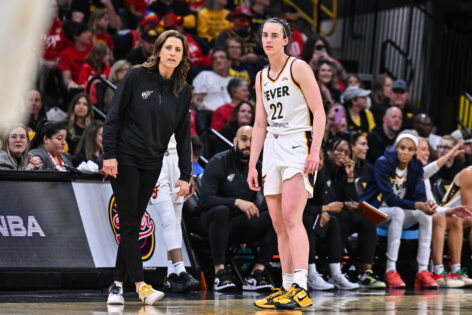

The Indiana Fever's 2024 season was one of significant change and intense scrutiny, largely due to the arrival of rookie sensation Caitlin Clark. Clark's transition to the WNBA was met with both excitement and challenges, as she adjusted to the league's physicality and the heightened expectations placed upon her. A notable issue during her rookie year was the apparent target she had on her back, with opposing players often engaging in aggressive play that sometimes crossed the line. This led to concerns about Clark's well-being and whether the Fever had adequately protected their star player.
However, recent reports suggest that Indiana Fever head coach has identified and begun to implement solutions to this pressing problem. While specific tactical adjustments remain under wraps, the overarching strategy appears to involve a multi-faceted approach aimed at providing Clark with increased support and protection on the court.
One aspect of this strategy involves roster changes designed to bolster the team's physicality and defensive presence. The acquisition of players known for their defensive prowess and willingness to "enforce" the rules sends a clear message to opponents that targeting Clark will not be tolerated. This is reflected in analyses that suggest the Fever have "built a wall" around Clark, deterring overly aggressive play through the presence of imposing teammates. Natasha Howard's arrival is expected to immediately change the dynamic, ensuring no more hard fouls go without pushback.
Another key element of the solution likely involves adjustments to the Fever's offensive schemes. By implementing strategies that create more space for Clark and provide her with better passing lanes, the coaching staff can reduce her exposure to physical contact. This could involve increased off-ball movement, more frequent use of screens, and a greater emphasis on quick ball movement to keep defenders off balance. The aim is not only to protect Clark but also to maximize her offensive potential by creating opportunities for her to utilize her exceptional shooting and passing skills.
Furthermore, it's conceivable that the coaching staff is working with Clark herself to develop strategies for dealing with aggressive defenders. This might include teaching her how to better anticipate contact, use her body to shield the ball, and draw fouls when appropriate. By empowering Clark to protect herself, the Fever can reduce her vulnerability and turn potential disadvantages into opportunities to gain free throws and put opponents in foul trouble.
Beyond the tactical and personnel adjustments, there's also a psychological element at play. By publicly addressing the issue of Clark being targeted, the Fever's coaching staff sends a message to the league that they will not stand idly by while their star player is subjected to unfair treatment. This can have a deterrent effect on opponents, who may be less inclined to engage in overly physical play if they know it will be met with scrutiny and potential repercussions.
While it remains to be seen how effective these new tactics will be in the long run, the early indications are promising. By proactively addressing the issue of Caitlin Clark being targeted, the Indiana Fever have demonstrated a commitment to protecting their star player and creating a more equitable playing field. As the 2025 WNBA season unfolds, it will be fascinating to observe how these strategies evolve and contribute to Clark's continued growth and success.